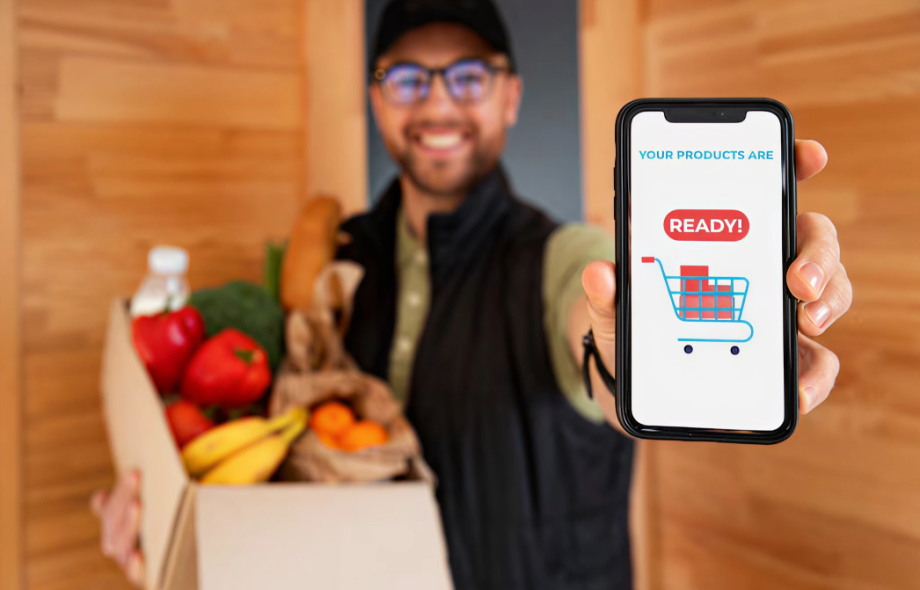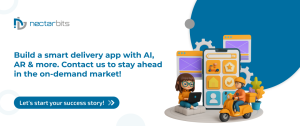In today’s fast-paced world, delivery apps have evolved from a luxury to a daily necessity. Whether it’s ordering your favourite meal, essential groceries, or urgent medication, these apps make life easier and more efficient. But as technology advances, so do user expectations. What lies ahead in the world of delivery app development?
This article explores the key trends, technological shifts, and market dynamics shaping the future of food delivery app development.
Market Overview: Growth at a Glance
The delivery app sector is experiencing exponential growth and shows no signs of slowing down. Here’s a snapshot of the current market:
| Metric | Value |
| Global Food Delivery Market (2024) | $1.45 trillion |
| Projected Value by 2030 | $2.85 trillion |
| Compound Annual Growth Rate (CAGR) | 11.5% |
| Smartphone Penetration Worldwide | 84% |
| Daily App-Based Food Orders (India) | Approx. 2.8 million |
These numbers highlight how deeply on-demand delivery services are integrated into daily life. Businesses that invest in cutting-edge food delivery apps are not just following trends—they’re shaping the future.
The Evolution of Delivery App Development
The past decade has seen massive changes in consumer behaviour and technology. With the rise of mobile phones and high-speed internet, the idea of “instant everything” has reshaped industries. Delivery apps are now built with a laser focus on user experience, performance, and automation.
The journey has moved from basic GPS-based food tracking apps to intelligent platforms powered by AI and machine learning, offering predictive features, real-time logistics, and frictionless checkout experiences.
Food App Development: A Market in Motion
Food delivery apps have become the poster child of on-demand success. Today, both global giants like Uber Eats and Zomato, as well as local restaurants, are entering the food app development space.
Why Businesses Are Investing in Food Delivery Apps:
- Direct channel to customers
- Increased brand loyalty
- Improved customer data insights
- New revenue stream
Read more: Food Delivery App Development in UK
Key Trends in Delivery App Development
1. Artificial Intelligence (AI) & Machine Learning (ML)
AI and ML are revolutionising how delivery apps interact with users. These technologies analyse user behaviour to provide personalised recommendations, predict future orders, and optimise delivery routes.
Stat: 63% of users prefer apps that offer tailored recommendations based on past behaviour. (McKinsey, 2024)
2. Contactless Delivery
Since the pandemic, contactless delivery has become a standard feature. It ensures safety, builds trust, and provides peace of mind for customers.
Benefits include:
- Reduced human interaction
- Digital proof of delivery
- Enhanced hygiene protocols
Trend: Over 75% of users now prefer contactless delivery options.
3. Augmented Reality (AR)
AR is taking user engagement to the next level. Imagine scanning a restaurant menu with your phone and seeing 3D previews of the dishes.
Use cases for AR in delivery apps:
- Visualise meals before ordering
- In-store AR directions for pickup
- Enhanced food item descriptions
4. Advanced Payment Solutions
Seamless payment options are vital for user retention. From UPI and mobile wallets to cryptocurrency integration, modern apps are offering secure, instant, and varied payment options.
Insight: Mobile payments are expected to make up 75% of all e-commerce transactions by 2026.
Building a Winning On-Demand Food Delivery App
Developing a food delivery app goes beyond coding—it’s about creating a frictionless and enjoyable customer journey. Here’s what matters:
User-Centric Design
- Easy-to-use interface
- Personalized recommendations
- One-tap reordering
- In-app chat and support
Robust Backend Infrastructure
- Cloud-based architecture for scalability
- Real-time analytics dashboard
- Secure APIs for data integration
Partnering with Experts
Collaborating with an experienced food delivery app development company can help ensure your app is not only functional but also competitive.
Emerging Technologies Driving Change
Internet of Things (IoT)
Smart devices and sensors are improving delivery operations:
- Monitor food temperature during delivery
- Real-time vehicle tracking
- Smart kitchen coordination
Blockchain
Blockchain brings transparency, especially in the supply chain and food quality verification. Consumers can trace their order from source to plate.
Voice Assistants
Integrating voice tech lets users order hands-free, repeat past orders, and track deliveries using Alexa or Google Assistant.
Challenges & Opportunities
| Challenge | Opportunity |
| Data privacy & compliance (GDPR) | Build trust with secure frameworks |
| Market saturation & competition | Stand out with niche targeting |
| Environmental impact of deliveries | Promote green logistics (EVs, bikes) |
Must-Have Features in Modern Delivery Apps
- Live Order Tracking
- In-App Chat Support
- Multi-Language & Currency Support
- Delivery Partner Management Panel
- AR Menu Integration
- Biometric Login & Secure Payments
Read more: Explore the Cost of Developing a Food Delivery App
Conclusion: Adapt, Innovate, Deliver
The future of delivery app development is full of promise. Businesses that harness technologies like AI, IoT, Blockchain, and AR will stay ahead of the curve. But innovation alone isn’t enough; understanding what users truly need and designing apps around those needs is the real key to success.
Whether you’re a startup planning to launch your first app or an enterprise optimising your current delivery solution, staying informed about industry trends will be crucial.
 :
https://in.pinterest.com/nectarbitsinc/
:
https://in.pinterest.com/nectarbitsinc/


